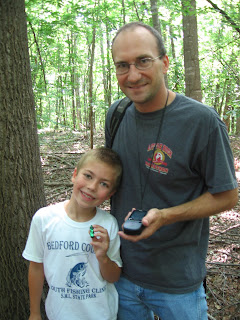DRBA JULY FIRST SATURDAY OUTING FLOATS MAYO RIVER

Want to spend your holiday close to home, in a beautiful setting with congenial folks?
Come to the Mayo River in Rockingham County, NC for the Dan River Basin Association’s First Saturday Outing on July 5. Meeting at 10:00 a. m. at a private put-in downstream from Anglin Mill Bridge, the group will float nine and a half miles to US 220 Business Access, near the towns of Stoneville and Mayodan.
Trip coordinators are T and Lindley Butler, among the founding members of the Association. T Butler recalls that the Mayo River was the first river she ever floated, and she has been canoeing ever since. She considers it an excellent place for “first-timers,” a fairly easy section of mostly Class 1 rapids suitable for a family outing. “The Mayo River is one of the region’s great treasures,” adds Lindley Butler, who helped secure the Mayo River State Park designation. “The unspoiled beauty of the river, with forested banks, wildlife, birds, and few signs of civilization make it a perfect get-away within easy reach of Piedmont North Carolina and Virginia.” Participants will pass through portions of the Mayo River State Park, navigating through several 1000-year-old fish weirs created in the river by Native Americans and used by early settlers. “The vee-shaped stone fish weirs concentrated migrating fish at the point of the vee, where they were collected in nets or baskets,” says North Carolina historian Lindley Butler, who has studied the history of the region. Great spawning runs came from the Atlantic, up the Roanoke and Dan, into the Mayo River and its tributaries, where the fish laid their eggs and headed back downstream. For centuries, until dams stopped the fish migrations, people who lived near the river made huge catches that fed their communities or provided a living. Nowadays, the fish weirs provide routes through shallow water, enhancing the interest of the float.
Participants in the outing are asked to bring boat, life jacket, lunch and water, to dress in layers of artificial (quick-drying) fabric and to sign a waiver.
To reach the put-in, from US 220 north of Stoneville, exit onto Smith Road (SR 1360) and turn west. Go four miles to a T-intersection with Anglin Mill Road (SR 1358). Turn left on Anglin Mill Road and travel about a half-mile to within less than a mile of the Anglin Mill Bridge over the Mayo. Turn left onto unpaved Old Anglin Mill Road (SR 1385). Go one-half mile to a T-intersection with Mayo Beach Road (SR 1359). Turn left, and travel one mile to the south end of the road.
Outings and meetings of the Dan River Basin Association are open to the public without charge.
For more information, contact T Butler,
members@danriver.org or 336-349-5727.
For membership information, visit
http://www.danriver.org/.







 Want to spend your holiday close to home, in a beautiful setting with congenial folks?
Want to spend your holiday close to home, in a beautiful setting with congenial folks?






 It is a sad and at the same time joyous moment when the students release "their babies" into the river.
It is a sad and at the same time joyous moment when the students release "their babies" into the river. Saturday morning about 20 fly fishermen assembled at the Mirror Factory parking area for the SRTU "Fish the Smith River & Cookout Event". At least a third of them were first time visitors to the river.
Saturday morning about 20 fly fishermen assembled at the Mirror Factory parking area for the SRTU "Fish the Smith River & Cookout Event". At least a third of them were first time visitors to the river.











